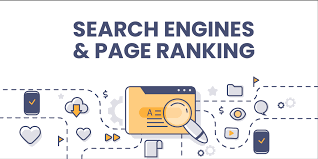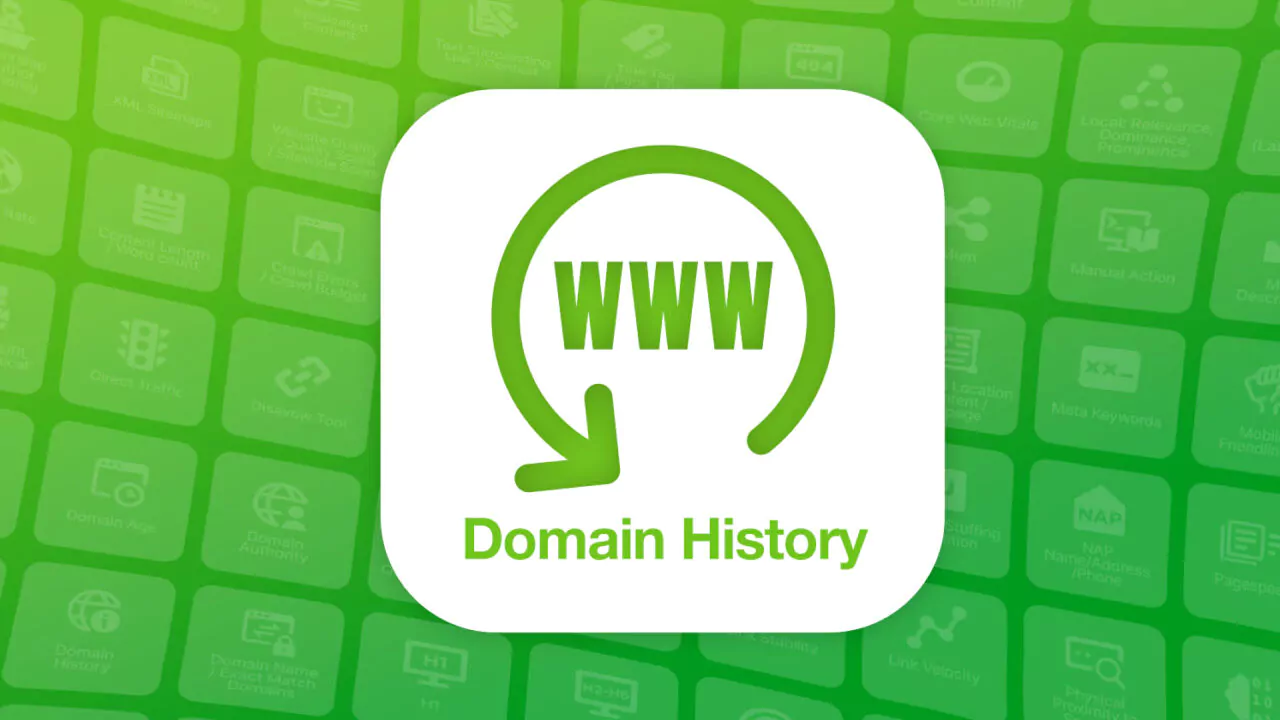Domain Age Checker
The Domain Age Checker tool allows you to find out the age of any domain, providing detailed information about its registration date and history. This tool is perfect for SEO professionals, webmasters, and anyone interested in the credibility and longevity of a domain. The process is quick and efficient, ensuring you get accurate domain age information instantly.
Share on Social Media:
Discover the Best Domain Age Checker Tools for Your Website
Curious about your domain’s history? A domain age checker can reveal your website’s longevity, providing insights that could shape your SEO strategy. This article explains how to harness the power of domain age checkers effectively, demonstrating their value in the grand scheme of achieving superior search rankings.
Key Takeaways
Domain age affects SEO by acting as a signal of authority and trust, potentially benefiting search engine rankings, although it is not the only factor considered by search algorithms.
Domain Age Checker tools are vital for SEO analysis, allowing users to determine the registration, update, and expiration dates of a domain, which can influence marketing strategies and competitive SEO planning.
Leveraging aged domains can offer strategic advantages in SEO due to their established backlink profiles, content history, and perceived credibility by search engines, but requires careful assessment to avoid inheriting past penalties.
Unlocking the Power of Domain Age for SEO

When entering the SEO battlefield, it’s natural to question the importance of domain age. In the digital trenches, domain age refers to the duration for which a domain name has been enlisted in the service of the web. It’s a seasoned warrior, boasting of the time it’s weathered in the ever-evolving landscape of the internet. As the years roll by, older domains often rise through the ranks, amassing authority and trust. This is not merely a ceremonial honor; it’s a testament to a domain’s resilience and loyalty to its cause, making it a revered ally in search engine ranking battles.
Domain age is not just a numerical value; it encapsulates the entire journey of a website from its inception to its current state of growth. Imagine a domain first registered in a bygone era, perhaps the early 2000s; it would be considered a sage in web years by today’s standards. But let’s not be blinded by the allure of antiquity; the sage’s wisdom is not the sole determinant of success. SEO strategies are multifaceted, and while domain age matter is a respected element, it marches alongside other critical factors like content quality, user experience, and the strength of backlinks. In this context, website age plays a significant role in shaping the overall performance of a domain.
The Significance of Domain Age in Search Rankings
A deeper exploration into SEO history reveals that older domains, similar to knights of old, carry a shield of credibility and stability. This venerable status often earns them the favor of search engines, resulting in higher rankings as a sign of their proven repute and commitment to providing value. Such domains are akin to ancient trees in a forest, their extensive roots symbolizing the depth of their online presence and the breadth of organic traffic they attract.
This enhanced credibility is not just for show; it translates into tangible benefits, as these domains are typically seen as reliable sources by search engines, casting a wider net to capture the flow of organic traffic.
Deciphering the Myths Around Domain Age and SEO
Yet, as with many legends, there are myths to be unraveled. The perceived omnipotence of domain age in search rankings is a tale often told, but in the hallowed halls of Google, the story unfolds differently. SEO experts within the tech giant have dispelled the notion that older domains wield a magical ranking advantage. Instead, domain age serves more as a sentinel, guarding against the influx of spam, rather than a kingmaker in the realm of search results.
Google’s own John Mueller advises digital strategists to shift their focus to other SEO practices, illuminating a path that veers away from an overreliance on the age of a domain. It’s a reminder that in the quest for top search engine positioning, one must carefully balance the weight given to domain age against the pursuit of quality content and user satisfaction.
Mastering Domain Age Checkers: A Comprehensive Guide

Among the myriad SEO tools, domain age checkers hold a unique position. They are specialized instruments designed to uncover the history of a domain’s journey on the internet. They are the historians of the internet, documenting the inception and evolution of a domain name. With the prowess of a domain name analyzer, they go beyond mere age calculation, serving up a feast of details that include creation data and other domain-related minutiae.
These features are not merely for curiosity’s sake; they are the compasses by which search engines navigate the sea of websites, using them as indicators of domain credibility and authority. For those embarking on large-scale SEO campaigns, a bulk domain age checker is the trusty steed, enabling the simultaneous verification of multiple domains’ ages with efficiency and precision.
Choosing the Right Domain Age Checker Tool
Choosing the appropriate domain age checker is similar to appointing a reliable historian who accurately records domain history. It must not only display the moment a domain was brought forth into the digital world but also chronicle the exact duration it has existed, down to the years, months, and days. To check domain age effectively, a domain age checker worth its salt will present the trifecta of dates: registration, updates, and expiration, painting a comprehensive picture of the domain’s lifecycle.
However, one must be aware of the occasional fog of technical limitations that may obscure the tool’s vision, preventing it from evaluating some enigmatic domain names.
How to Interpret Results from a Domain Age Checker
Once you have the results from a domain age checker, it’s important to understand how to interpret this information. Established domains, grizzled by time, may have accrued a tapestry of backlinks, weaving a robust profile that can fortify SEO. These expired domains, once dormant, can be rekindled to life, swiftly captured by search engines’ gaze, and imbued with a swifter SEO impact than their fledgling counterparts. Harnessing the power of these domains can be a shrewd marketing gambit, allowing businesses to bask in the residual glow of established search engine authority and redirect the currents of traffic to their shores.
Yet, in the grand scheme of search engine optimization, an oracle from Google reminds us to channel our efforts into crafting quality content and providing an exceptional user experience, rather than resting on the laurels of domain age alone.
The Lifecycle of a Domain: From Registration to Renewal

Like everything else shaped by time, domains also have a lifecycle that fluctuates between registration and renewal. The renewal ritual is a straightforward march:
Domain owners must traverse through their management dashboards.
Select their domain champions.
Choose the term of renewal.
Complete the tributary transaction.
Once this rite is performed, the domain rekindles its active status within a day, ensuring that its digital heartbeat continues with minimal interruption.
Domain age checkers serve as the guardians of this lifecycle, offering insight into the longevity of domains and steering clear of those with a penchant for imminent expiration or a history of fleeting commitments. It is said that spammers often dabble in disposable domains, fleeting and short-lived, whereas the domains of the true and the steadfast are etched into the annals for extended epochs.
Understanding Domain Registration Date
The domain registration date signifies the start of a domain’s lifecycle, indicating when it first entered the digital universe. To unearth this pivotal date, one must perform a ritual known as a WHOIS search, which conjures up a domain age checker report replete with the ‘Creation Date’—the domain’s birthmark.
Navigating Domain Expiry Date and Its Implications
Conversely, the expiration date is the shadow that looms over a domain’s existence, signaling the time for renewal lest it fades into oblivion. This date, etched in the WHOIS record, forewarns of the domain’s impending need for revival. Domain age tools cast light upon this expiry date, aiding in the assessment of the domain’s remaining lifespan.
While domains can be resurrected post-expiration, a strategic renewal for the longest term possible can be a declaration of unwavering commitment, signaling the domain owner’s long-term aspirations. Should a domain languish unclaimed post-redemption, it enters the limbo of Pending Deletion Status, preceding its eventual release back into the digital wilds. It is crucial to note that the renewal of hosting services does not extend the life of a domain by proxy, as each is beholden to its own cycle of renewal.
Evaluating Website History with Domain Age

The aged parchment of a domain’s past can reveal much about its reputation and potential for future conquests in SEO. Domain age stands as a beacon, illuminating the domain’s historical engagements, such as user interactions and the echoes of past reviews or comments that have shaped its standing. The domain’s registration date is a cornerstone in this historical excavation, offering a glimpse into its age and ancestry, which is instrumental in appraising the domain’s repute before laying claim to it. This necessitates a transparent WHOIS record, a clear window into the domain’s past deeds.
For a more granular analysis, one might also consider additional domain-related information such as the domain’s past IP addresses, hosting company affiliations, and the digital footprints left in web archives, all of which enrich the narrative gleaned from domain age.
The Role of Domain Age in Assessing Backlink Quality
In the quest for search engine favor, the age of a domain can be a stout ally, enhancing the caliber of a website’s backlink profile. Search engines regard older domains as bastions of authority, their longstanding online presence a testament to their integrity. Such domains are likely to have amassed a larger compendium of backlinks over time, creating a legacy of connectivity that bolsters their SEO fortitude. The chronicles of an older domain often include a rich tapestry of content and a storied collection of backlinks, which combine to form a backlink profile of considerable authority.
Yet, the true measure of a domain’s backlink arsenal lies not in sheer quantity but in the quality of its links; high-caliber links can be a boon to SEO, while those of dubious nature a bane.
Domain Age and Historical Content Analysis
Beyond the backlink realm, the historical content of aged domains is a trove of insights, rich with potential for shaping modern SEO endeavors. Established domains have had the luxury of time to cultivate a vast repository of content, offering a panoramic view of their thematic landscape. Understanding the content lineage and previous use of an aged domain can be a guiding light in forecasting its aptitude for current SEO ventures, ensuring that its storied past aligns with the aspirations of its prospective future owners.
Strategic Advantages of Aged Domains

Within the context of digital strategy, aged domains resemble ancient fortresses filled with history and strategic advantages. Launching a website on such a domain can be likened to planting a flag on a well-established fort, promising quicker ascension in search engine rankings—a phenomenon evidenced by a site that garnered 15,000 unique organic visits per month within its inaugural year.
The seasoned nature of aged domains bestows upon them an aura of SEO goodwill due to the trust that search engines place in their longevity and proven track record. The awareness of a domain’s age is not only useful for validation purposes but also plays a pivotal role in constructing brand trust among consumers and stakeholders, as it reflects the enduring presence of a company.
However, the strategic deployment of an aged domain requires vigilance; one must ensure that its past is unmarred by penalties from search engines, as such blemishes could thwart SEO efforts. In the grand chess game of SEO, maintaining a pristine backlink profile and adhering to search engine guidelines are essential maneuvers to harness the full strategic potential of aged domains.
Moreover, the digital marketplace offers a bazaar of aged domains no longer in use, presenting a unique opportunity for businesses to swiftly establish a formidable online presence.
Why Older Domains Tend to Rank Higher
The enigma of why older domains often scale the search engine echelons with greater ease can be unraveled by understanding their entrenched web presence. These domains are perceived as repositories of wisdom and reliability, which in the eyes of search engines, translates to more credibility and a higher likelihood of ranking favorably. Websites housed on these seasoned domains benefit from an established backlink repertoire and a trove of substantial content, both of which provide SEO advantages in terms of authority and trustworthiness.
Although domain age is not a direct conduit to higher rankings, the sustained cultivation of authority and trust over time lends itself to more favorable evaluations by search engines. An older domain’s relevance to a wider array of search queries further fuels its competitive edge in rankings, thanks to its established presence and historical significance.
Leveraging Established Domains for Competitive Edge
The strategic employment of aged domains in an SEO strategy can be a masterstroke, bolstering a website’s domain authority and thereby enhancing its visibility in search engine results. Businesses, particularly newcomers to the digital arena, can capitalize on aged domains with preexisting domain authority to gain a competitive leap in market visibility, propelling their growth trajectory.
For the full benefits of aged domains to be realized, a balanced approach to SEO is imperative, necessitating the cultivation of high-quality content alongside technical SEO finesse.
Using Domain Age Checkers for Market Research
Domain age checkers offer more than just an insight into a domain’s past. They serve as valuable tools for conducting market research and competitive analysis. By delving into a plethora of domains at once, domain age checkers enable a comprehensive assessment of an entire industry’s digital landscape, revealing SEO-related data and competitive performance metrics.
Such analysis can lay bare the strengths and weaknesses across a swath of websites, providing a panoramic view of the battlefield where one’s digital adversaries and allies stand.
Analyzing Competitor's Domain Age for SEO Insights
Understanding the longevity and stability of a competitor’s domain can yield valuable insights into their SEO strategies. By scrutinizing competitors’ domain ages, one can infer the depth of their digital roots and the steadfastness of their online presence. Keywords and current rankings serve as a compass to navigate through the competition, allowing for a juxtaposition of domain ages against keyword rankings and content strategies.
Monitoring the organic traffic growth, engagement, and conversion rates further dissects the influence of domain age on a competitor’s SEO performance, shedding light on potential advantages conferred by an established online presence. It is this established presence, often inherent to older domains, that may endow them with an edge in search rankings, a factor to be considered in any competitive analysis.
Identifying Market Trends Through Domain Age Analysis
The investigation of domain age within a specific market segment can reveal the ebb and flow of the digital terrain. By charting the age of domains, one can discern the shifting sands of market trends and position their strategies to ride the wave of change. Such foresight can empower businesses to adapt and pivot, perhaps by acquiring aged domains in burgeoning sectors or re-evaluating their digital footprint in light of emerging competitors and a domain’s age.
The domain age analysis acts as a seer, predicting the arrival of new challengers, the surge of niche websites, and the consolidation efforts of industry behemoths, all of which shape the digital marketplace.
Integrating Domain Age Data with Other SEO Tools
Combining domain age data with other SEO tools can lead to a harmonious and efficient search optimization effort. When domain age data is woven into the broader tapestry of SEO tools, a comprehensive approach to search optimization emerges, one that is both nuanced and powerful.
Synergy Between Domain Age and Search Engine Rankings
The synergy between domain age and search engine rankings is a delicate dance, where each step is measured and every turn is calculated. While domain age is a venerable factor esteemed by search engines, it is but one melody in the grand concerto of ranking factors. To achieve a crescendo of high search engine rankings, a medley of elements must come into play—stellar content, an optimized site performance, and a solid backlink profile. These components, in concert with domain age, orchestrate an SEO strategy that resonates with the algorithms of search engines.
By assessing domain authority, one can discern whether a website’s pages bask in the glow of the site’s overall stature or shine independently through page-level optimization.
Complementing Domain Age with Comprehensive SEO Audits
A harmonious SEO strategy also calls for the integration of domain age with comprehensive SEO audits. Such audits dissect a website’s search optimization anatomy, scrutinizing the health of its technical, on-page, and off-page elements. By factoring in domain age alongside key SEO metrics, a holistic assessment of a website’s competitive stature is achieved.
For those newer to the digital domain, the path to prominence involves:
Establishing stable URLs
Fostering a network of quality backlinks
Curating an unparalleled user experience, regardless of the relative youth of their domain
It is a reminder that in the realm of SEO, vigilance and adaptability are the keys to maintaining a competitive edge.
Domain Age Checker by PagesTools.com
Among the plethora of domain age checker tools available, the Domain Age Checker by PagesTools.com is particularly noted for its reliability and efficiency. Designed with the needs of SEO professionals, webmasters, and curious individuals in mind, it offers a swift and accurate assessment of a domain’s age, illuminating its registration date and weaving the tapestry of its historical backdrop.
This online tool is characterized by its rapid and efficient process, delivering instant and precise domain age data, cementing its place as an essential asset in the SEO toolkit. The user-friendly interface of PagesTools.com allows for the analysis of up to five domains at a time, each inscribed on a separate line, thus streamlining the process for those who seek insights into multiple domains simultaneously.
Summary
As we draw the curtains on our journey through the venerable world of domain age, it is clear that while it is not the singular force behind a website’s SEO triumph, it is a significant piece of the puzzle. From the analytical power of domain age checker tools to the strategic advantages of leveraging aged domains, the insights gleaned here are invaluable for crafting an SEO strategy that respects the past while forging ahead into the future. Let this knowledge serve as a guide, inspiring you to wield the sword of domain age with precision and purpose in the digital battles to come.
Frequently Asked Questions
Does domain age directly affect search engine rankings?
Domain age does not directly affect search engine rankings, but it can contribute to a domain's authority and trust, indirectly influencing rankings by balancing it with other SEO practices such as content quality and backlinks.
How can I check the age of a domain?
To check the age of a domain, use a domain age checker tool like the one provided by PagesTools.com. Simply enter the domain name, and the tool will give you the registration date and current age of the domain.
Are older domains always better for SEO?
While older domains may have advantages in SEO such as established authority and backlink profile, the overall SEO impact depends on factors like domain history, content quality, and adherence to SEO guidelines. It's not just about the age of the domain, but also its reputation.
Can I use a domain age checker for market research?
Yes, using a domain age checker can provide valuable insights for market research by giving information about competitors' longevity and market trends.
What should I consider when renewing a domain?
Consider the domain's expiry date and renew it before it lapses to avoid downtime or SEO loss. It's strategic to renew for the longest period possible to convey commitment and stability to search engines and users.